A closer look at the Lamborghini Huracan Sterrato
Just when you thought Lamborghini couldn’t possibly come up with any more Huracan derivatives, the Bolognese Raging Bull has busted out arguably the wildest take yet on its mid-engined V10 supercar.
Production of the new Lamborghini Huracan Sterrato (Italian for “Dirt Road”) commences next February, and just 1,499 units will be built and sold, with ex-factory pricing pegged at 263,000 euros plus taxes, which positions it in Lambo’s line-up between the Tecnica and hardcore STO.
Lamborghini Huracan Sterrato inception
The offbeat Sterrato is the result of designers and engineers thinking outside the box, as we gleaned from Lamborghini’s head of R&D Strategy and Projects Coordination, Luca Pacini, who explains: “We thought, okay, we have experience in off-road dynamics and dune surfing with the Urus, so it would be really fun to bring these qualities to the Huracan.”
Transforming a car initially conceived to excel on racetracks and winding bitumen roads into a dirt-track hero required a wholesale reengineering job. The first step was to add to the donor car’s limited ground clearance and suspension travel.
This was achieved via a bespoke set of springs, dampers, and reinforced suspension arms with revised geometry. The result is an extra 44 mm ground clearance, which means the car sits 171 mm off the deck – more or less on par with an average compact crossover.
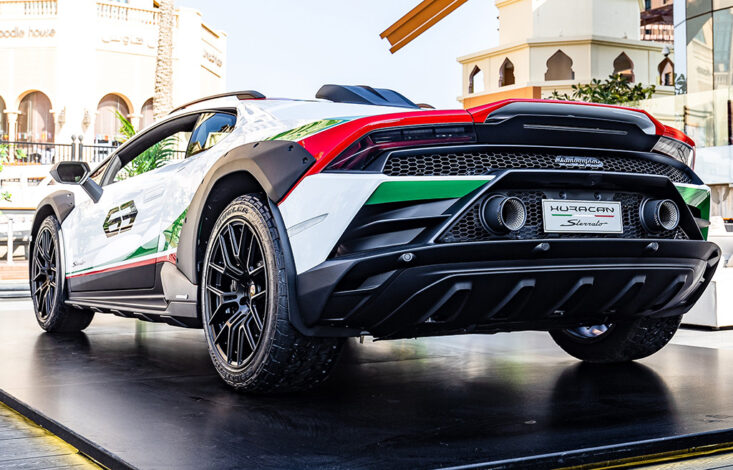
Lamborghini also worked with Bridgestone to develop a special set of Dueler All-Terrain 002 tyres measuring 235/40 R19 at the front and 285/40 R19 at the rear. Explaining the rationale behind the bespoke boots, Pacini says: “We needed to develop a specific tyre compound and tread pattern as we needed particular qualities in terms of grip on tarmac and off-road ability.”
Early in the Sterrato’s testing and development phase, a few radiators and front differentials were destroyed as Lambo’s pro drivers flogged the prototypes across rough terrain.
The remedy was adding aluminium underbody protection at the front, which shielded the radiator and front differential without adding too much weight. Lamborghini quotes a dry weight of 1470 kg for the beefed-up Sterrato, which is only 91 kg more than the lithe Huracan Tecnica.
Engine modifications
Another lesson learnt from early forays on loose surfaces was that the V10 engine didn’t enjoy ingesting dust and gravel when pro drivers raised plumes while drifting the car around. The solution was to incorporate a roof snorkel positioned in a channel of clean air, ensuring the 5.2-litre motor doesn’t gulp down a mouthful of dirt.
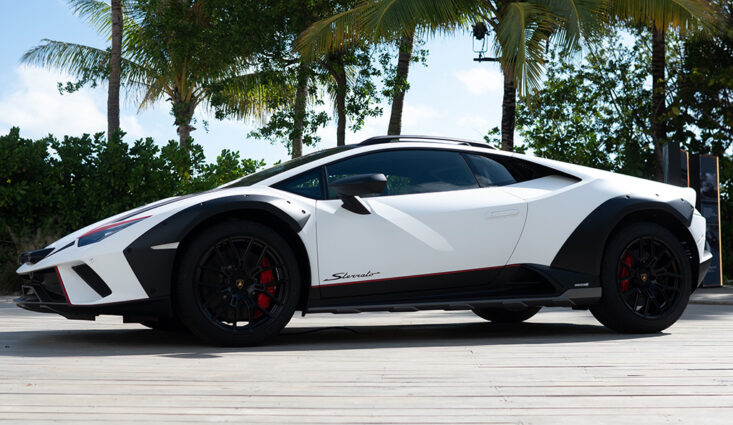
Incidentally, the V10 in this application is in a slightly lower state of tune than in the STO/Tecnica, pushing out 610 hp rather than the 640 hp that its siblings have at their disposal (this is partly due to the Sterrato’s revised induction system that’s fed by the roof snorkel).
Exterior mods
Another solution developed specifically for the Sterrato are the wheel arch fenders. Apart from accommodating widened wheel tracks (by 30mm at the front and 34mm at the rear), the fenders also protect low-impact strikes from low-hanging branches and bushes.
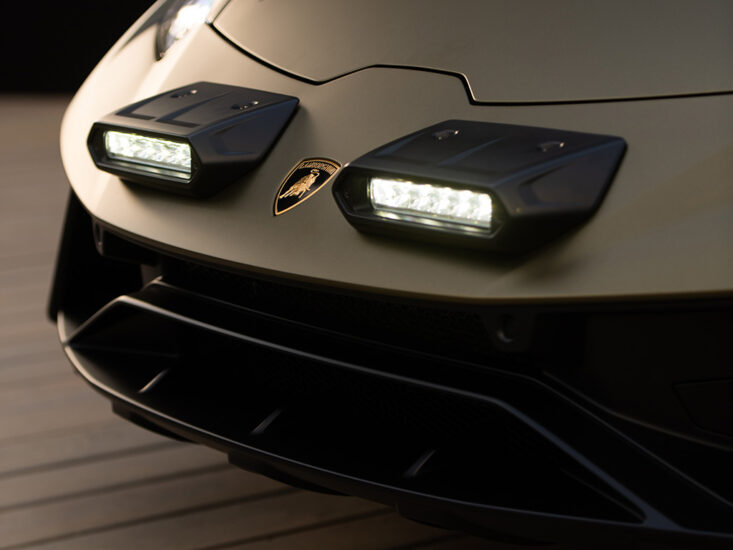
A couple of the Sterrato’s other unique elements also presented technical challenges as the rally-inspired auxiliary lights have to meet US pedestrian impact requirements. In addition, strengthening had to be added to the Huracan’s structure to support the roof bars, rated to a modest 30 kg. This was because the Huracan was never designed to carry loads on its roof.
Lamborghini Huracan Sterrato performance
The Sterrato’s all-terrain tyres and jacked-up height means v-max is electronically limited to 260 kph, but a higher top speed is academic anywhere other than derestricted autobahns and racetracks with especially long straights. Nevertheless, acceleration remains undiminished, with the Sterrato dispatching 0-100 kph in 3.4 seconds and sprinting from 0-200 kph in 9.8 seconds.
As per its Huracan siblings, the Sterrato comes standard with carbon-ceramic stoppers comprising ventilated rotors measuring 380×38 mm and 356×32 mm front/rear, gripped by six-piston front and four-piston rear callipers. As a result, the Sterrato wipes off speed just as ferociously as it piles it on, coming to a standstill from 100 kph in just 39 m.
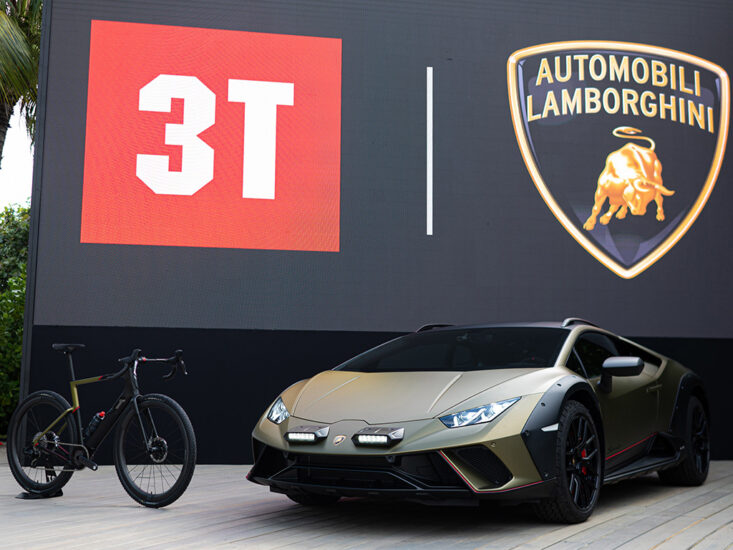
Lamborghini Huracan Sterrato Driving characteristics
The Sterrato dispenses with the rear-wheel steering that the Tecnica and STO are equipped with (it was deemed unnecessary on dirt tracks), but it instead gets a Rally Mode that’s similar in principle to the system used in the Urus Performante.
Rather than disengaging the drive to the front differential, Rally Mode loosens up the electronic safety net, enabling tail-out antics on dirt surfaces. You’re not completely left on your own though, as the system has been calibrated to intervene if sensors indicate a spin is imminent.
Lamborghini’s chief technical officer Rouven Mohr says the Sterrato serves up different driving characteristics to other Huracans as its ride is softer and it pitches and rolls more as a result of its jacked-up ride height and more compliant suspension.
Mohr says the Sterrato’s setup is more akin to a rallycross car, adding that one of the biggest technical challenges was to ensure it remained stable at high speeds.
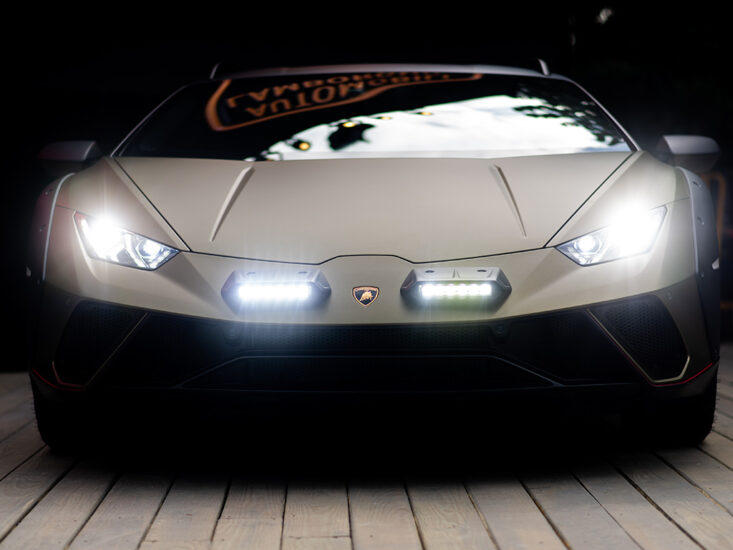
Most ‘usable’ Hurcan to date
Although the Sterrato is the result of out-of-the-box thinking, it could end up being the most usable Huracan to date, especially for prospective owners in countries such as India, where road surfaces can be diabolical. It also stands to be the only supercar that doesn’t require its driver to slow down to a crawl every time a speed hump looms ahead.
Huracan Sterrato buyers will have almost limitless scope for personalisation, as Lamborghini’s Ad Personam program enables them to choose from 350 external colours and over 60 colours for the leather and Alcantara interior.













There are no comments. Be the first!